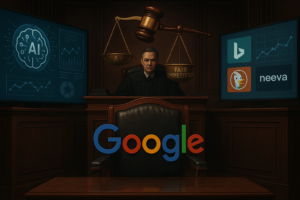California’s AI Safety Legislation: A Missed Opportunity for Innovation Oversight
The recent veto of California’s AI safety bill by Governor Gavin Newsom raises critical questions about the balance between fostering innovation and ensuring public safety. As technology giants oppose regulation, the future of AI oversight hangs in the balance, potentially leaving powerful AI systems unchecked.
A Pivotal Moment for AI Regulation
In a pivotal moment for artificial intelligence regulation, California Governor Gavin Newsom has chosen to block a groundbreaking AI safety bill, sparking a heated debate over the future of AI development in the state. This legislation aimed to implement some of the first comprehensive regulations on AI technologies in the United States, a move that many advocates believe is essential for ensuring public safety amidst rapid technological advancements.
Key Provisions of the Proposed Bill
The proposed bill, authored by Senator Scott Wiener, sought to enforce safety testing for advanced AI models before they could be deployed. It was designed to address growing concerns about the potential risks associated with unregulated AI systems, including:
- Algorithmic bias
- Privacy violations
- Ethical dilemmas
Governor Newsom’s Veto
However, the bill faced significant pushback from major technology companies that argued such regulations could stifle innovation and drive talent out of California. Governor Newsom’s decision to veto the bill reflects a complex balancing act between promoting a thriving tech industry and safeguarding the public from the inherent risks of powerful AI technologies. In his statement, the governor expressed concerns that the proposed legislation could impose burdensome requirements on developers, potentially hindering California’s status as a global technology leader.
He asserted that an overly cautious approach could push companies to relocate to more lenient regulatory environments, undermining the state’s economic growth.
Critics’ Perspective
Critics, including Senator Wiener, argue that the governor’s veto is a step backward. They contend that without some form of oversight, AI systems could be developed and deployed without adequate consideration of their societal impacts. The absence of a regulatory framework could lead to unchecked development of technologies that may:
- Exacerbate existing inequalities
- Introduce new risks to individuals and communities
The Evolving Landscape of AI Development
The landscape of AI development is rapidly evolving, and with it, the need for effective governance is becoming increasingly urgent. Several other states are watching California’s approach closely, as they consider their own legislative measures to manage AI technologies. The outcome of this debate may set a precedent for how AI is regulated across the country.
Moreover, as AI continues to permeate various sectors, from healthcare to finance, the implications of unregulated AI are far-reaching. Companies often prioritize innovation and market capture over safety and ethics, raising alarms about potential misuse of AI in decision-making processes that affect people’s lives.
The Conversation on AI Regulations
In this context, the conversation about AI regulations is not just about limiting technological advancement but rather about ensuring that such advancements are aligned with societal values and public safety. The challenge lies in creating a regulatory environment that encourages innovation while also safeguarding against its unintended consequences.
The Importance of Stakeholder Engagement
As the discourse around AI evolves, it is crucial for stakeholders, including policymakers, technologists, and the public, to engage in meaningful dialogue about the future of AI. The recent veto in California serves as a reminder of the complexities involved in regulating a technology that is both transformative and potentially hazardous. The question remains: How do we harness the power of AI while ensuring it serves the greater good?
California’s decision to block the AI safety bill leaves a significant gap in regulatory oversight, prompting a need for renewed discussions on how to balance innovation with accountability in the AI landscape.


